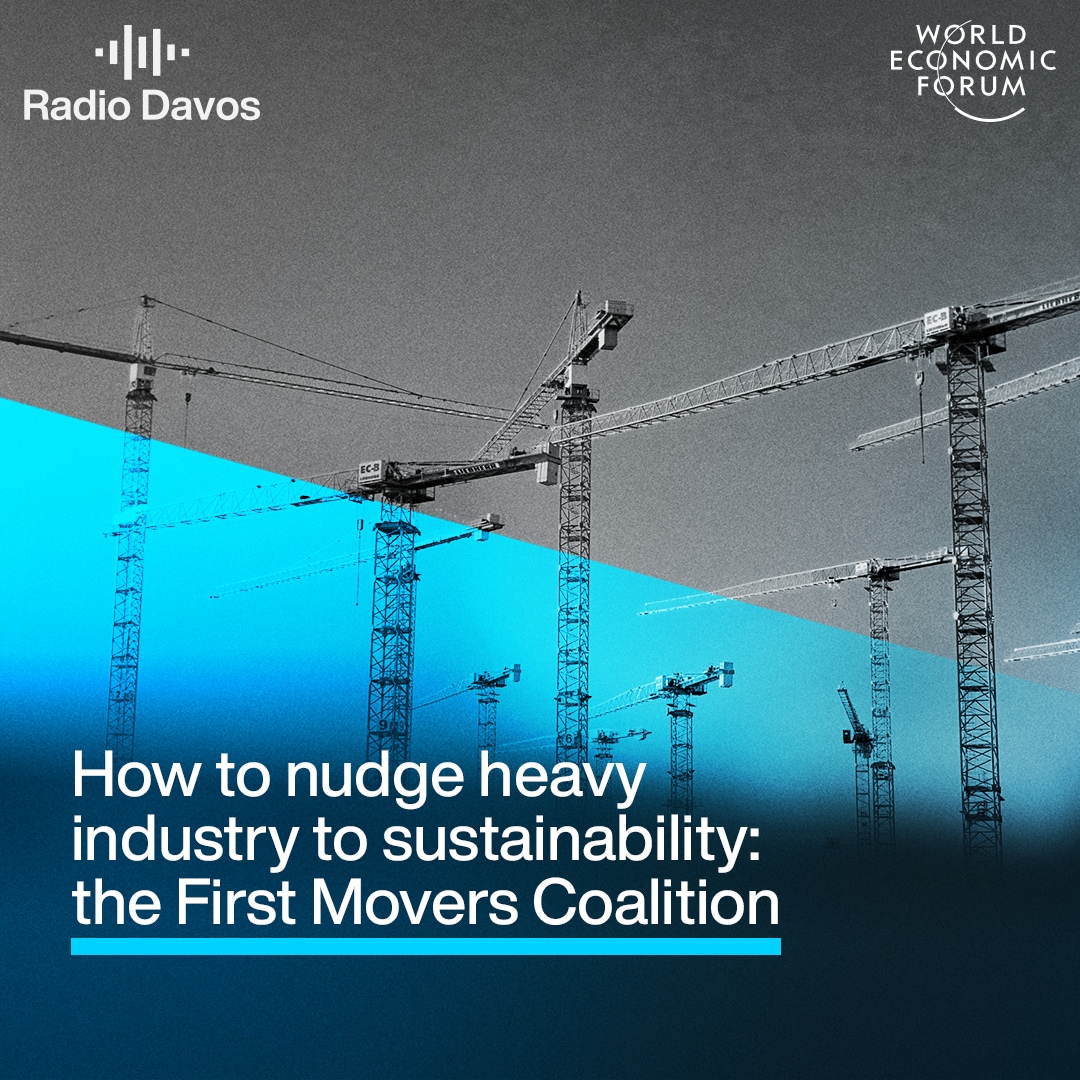Lessons from Africa on climate change adaptation
African nations can pose as case studies for nations soon to face similar climate risks.
Image: REUTERS/Tiksa Negeri
Declan Conway
Professorial research fellow, Grantham Research Institute on Climate Change and the Environment at the London School of EconomicsDeclan Conway
Professorial research fellow, Grantham Research Institute on Climate Change and the Environment at the London School of EconomicsStay up to date:
Climate Indicators
- Countries around the world are already feeling the effects of climate change, highlighting the importance of reducing CO2 emissions.
- A new open-access book on building adaptation and resilience in Africa is helping other countries tackle these emerging risks.
- Case studies include 'participatory scenario planning' in Malawi and integrating climate risk into Lusaka’s Strategic Plan.
The Earth’s changing climate is already having major consequences for the environment and society. While these impacts highlight the need to cut greenhouse gas emissions, they also show that communities around the world will need to adapt to manage the changes around them.
But agreeing on and implementing adaptation decisions can be complex, requiring careful consideration of multiple factors and perspectives, plus balancing different priorities over different timescales.
Have you read?
The demand for information and guidance to support this process is growing fast, and is highlighting the need for new sources and formats of data – as well as more innovative ways of engaging with the people that will use it.
But there are no blueprints for this learning process. Instead, we have to make progress through trial and improvement. In this article, we unpack insights from a new open-access book on building adaptation and resilience in Africa.
The book presents applications where climate information can be used to inform adaptation and includes examples of early warning systems, river basin development, urban planning and rural livelihoods.
Here, we focus on two case studies. One shows how “participatory scenario planning” has been used with seasonal climate forecasts in Malawi to generate information for farmers. The other engages with city planners in Zambia’s capital Lusaka to develop a strategic plan for the city.
Participatory scenario planning in Malawi
In order to adapt and make decisions that reduce the impacts of climate variability and change, some level of information about the future climate conditions is required.
This can be provided on different timescales, from short-term – such as seasonal forecasts – to longer-term projections developed from climate model simulations.
Like many other countries, the information available to Malawi has increased over time; however, this has not always led to it being used effectively. This is because the nature of the information does not necessarily meet decision-making needs, and its presentation is not always well understood by users, such as farmers.
“Participatory scenario planning” (PSP) is a tool that aims to generate useful and usable information about different potential futures. Following successful use in other African countries, Dorothy Tembo-Nhlema from the Lilongwe Wildlife Trust and colleagues explored how it has been applied in Malawi.
PSP is an integrated community-based approach aimed at strengthening adaptive capacity and supporting planning and implementation of disaster risk reduction and climate-resilient development, informed by knowledge of climate information and risks.
PSP allows for collective interpretation of seasonal forecasts by involving producers, users and intermediaries in jointly generating meaningful impact-based scenarios based on seasonal climate forecasts. For example, such scenarios may focus on the likelihood of below normal, normal and above-normal rainfall.
The approach is designed to allow for blending of indigenous and scientific knowledge in climate information.
PSP was first formally implemented at the national level in Malawi in 2015-16. In a meeting that brought together a “core team“ of Malawian NGOs, the Department of Disaster Management Affairs and the Ministry of Agriculture, Irrigation and Water Development, participants were presented with the seasonal forecast by the Department of Climate Change and Meteorological Services.
The groups discussed three scenarios of the season and shared potential impacts, opportunities and recommendations. The PSP core team then introduced PSP at the district level – particularly in areas where project partners expressed interest and could collaborate and assist with logistics of participation.
At the next stage, relevant community institutions and community members assisted in interpreting the seasonal forecasts and putting them in context with their past experiences and local indicators related to weather and climate.
Observing this process during 2015-16 showed scope for PSP as a method to produce useful and usable climate information for decision-making.
Farmers who have used PSP-issued information were able to maintain production even in adverse weather conditions. PSP has helped farmers with decisions, such as the timing of planting seeds to coincide with when effective rains start, determining the type of seeds based on the length of the growing season forecast, and identifying farming practices to be completed during months of prolonged dry spells.
However, as PSP continues, there is a need for more extensive analysis and evaluation. For example, to cover more districts, to consider the different needs of men and women, and to incorporate the perspectives of those that produce and use the information.
A stronger evidence base would provide the basis to promote greater integration of PSP in planning frameworks to ensure its regular occurrence and embeddedness in formal governance structures and avoid reliance on short-term projects.
Integrating climate risk in Lusaka’s Strategic Plan
Through collaboration between Dr Anna Taylor from the Climate System Analysis Group (CSAG) at the University of Cape Town, Dr Gilbert Siame at the University of Zambia and researcher Brenda Mwalukanga, they explored opportunities to integrate climate risk into the Lusaka City Council “strategic plan” for 2017-21.
Such plans establish priorities for public spending and the work of public officials in city administration and management.
The team brought together representatives of civil society and the private sector with city councillor and social and climate scientists to discuss climate risk. They used interactive events, such as “learning labs” (pdf) and “city dialogues”, city exchange visits and training events. They also embedded a project researcher in Lusaka City Council and the University of Zambia.
Overall, thirty-three wards in the city were engaged through community meetings to create ward risk profiles alongside needs and priorities.
As part of the process, CSAG’s Dr Chris Jack and colleagues designed an information “distillation” project to make clear and open for deliberation the implicit decisions and value judgements that occur throughout the process of constructing information about climate risk.
The process led to the development of “climate risk narratives”, supported by scientific evidence, as a tool for explaining descriptions of the city under contrasting plausible future climate conditions.
They provided learning lab workshops as a way to engage. Here, they held discussions about climate risk in the context of wider urban development challenges – highlighting water scarcity, declining groundwater quality and frequent flooding as points of focus for deliberation and feeding into the strategic plan.
The final step they identified was to translate the strategic plan into the “Integrated Development Plan” – the main spatial planning document for the city.
Reflecting on the experience, Anna and colleagues identified four key lessons: trust and strong relationships are crucial; a range of stakeholders need to be involved; wider enabling frameworks for legal, policy and financing need to be in place; and skilled intermediaries can help resolve resistance and conflicting agendas.
A process of consultation
These experiences and others profiled in the book all rely on a number of underlying principles and structures designed to promote effective engagement about climate risk.
The approaches generally emphasise the importance of involving the people that will ultimately use the information. They also recognise that action on adaptation needs to address its cross-cutting nature – that is, climate risks affect multiple sectors of society at the same time.
This requires integrating information about what the future climate will look like with insights from how society responds to change and external pressures.
For national meteorological and hydrological services, regional economic communities and their associated bodies, this means that conversations around adaptation go far beyond scientific data. This can create new and far-reaching demands on these traditionally science-based organisations and their staff – in terms of remit and skills and financial resources.
As a result, there is an increasingly important role for “boundary” organisations, such as the media and “agricultural extension workers” – intermediaries between research and farmers. Such groups can help forge links between knowledge and action.
Potential end users include rural development planners and disaster managers at the national level, and farmers and pastoralists at the community level.
The information provided also needs to suit the scale of the decision situation. For most small and short-lived decisions, only limited technical information is actually required to achieve confidence in making decisions. Indeed, leaving climate information completely out of the conversation initially may be good practice to avoid influencing answers and to openly identify primary concerns.
However, for decisions about major long-lived investments – such as large-scale infrastructure and urban planning – detailed assessments are more appropriate using projections from climate models and detailed analysis of past variability.
By raising awareness, sharing knowledge between different actors and promoting inclusion, these methods help communities adapt to their changing environment.
The hope is that a society that is more climate aware, more climate literate and more climate prepared will be better placed to promote equitable decisions that can underpin effective action on adaptation.
Accept our marketing cookies to access this content.
These cookies are currently disabled in your browser.
Don't miss any update on this topic
Create a free account and access your personalized content collection with our latest publications and analyses.
License and Republishing
World Economic Forum articles may be republished in accordance with the Creative Commons Attribution-NonCommercial-NoDerivatives 4.0 International Public License, and in accordance with our Terms of Use.
The views expressed in this article are those of the author alone and not the World Economic Forum.
Related topics:
Forum Stories newsletter
Bringing you weekly curated insights and analysis on the global issues that matter.
More on Climate ActionSee all
Cornelius Pieper and Nicky Collins
September 15, 2025
Lindsey Hall
September 15, 2025
Joe Myers
September 12, 2025
Emilian Axinia
September 11, 2025






